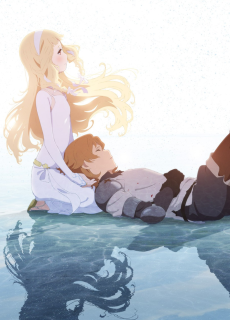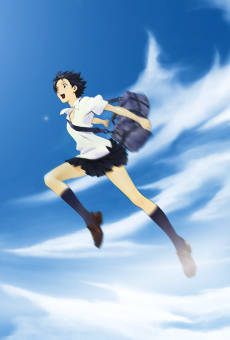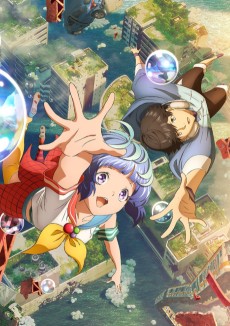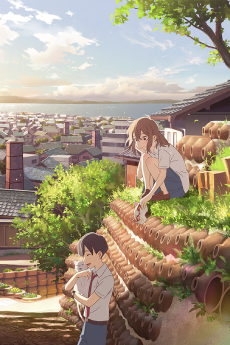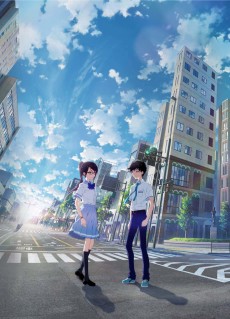ALICE TO THERESE NO MABOROSHI KOUJOU
MOVIE
Dubbed
SOURCE
ORIGINAL
RELEASE
September 15, 2023
LENGTH
111 min
DESCRIPTION
Masamune, a third-year middle school student, lives in a town where all the exits have been sealed off due to a sudden explosion at a steel mill, causing time to stand still. Residents are forbidden from making any changes and spend their suffocating days in the hopes of returning to normalcy someday.
One day, Masamune's mysterious classmate Mutsumi guides him to the fifth furnace of the steel mill, where they encounter a girl who cannot speak and resembles a wild wolf. The meeting between the two girls and Masamune disrupts the balance of the world, and the unstoppable "impulse of love" from boys and girls tired of their daily lives begins to destroy the world.
CAST
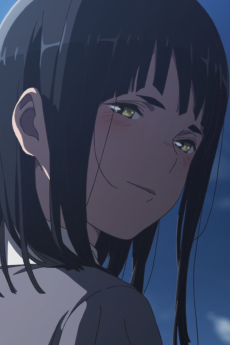
Mutsumi Sagami
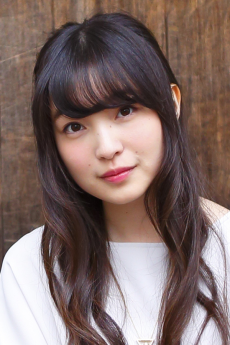
Reina Ueda
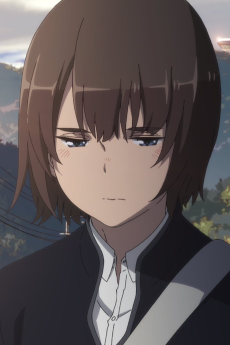
Masamune Kikuiri
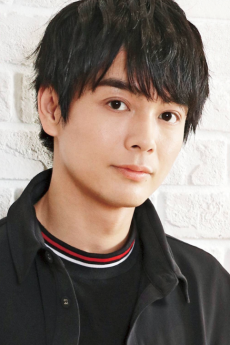
Junya Enoki

Itsumi

Misaki Kuno
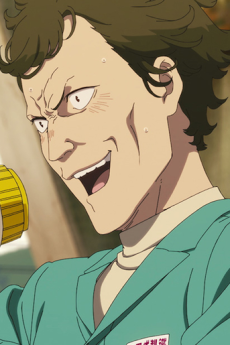
Mamoru Sakami
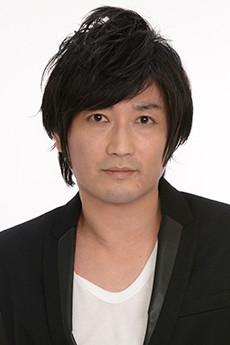
Setsuji Satou
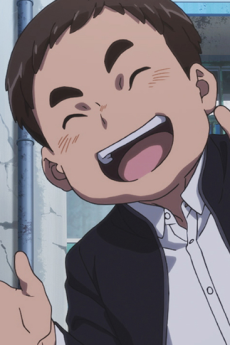
Daisuke Sasakura
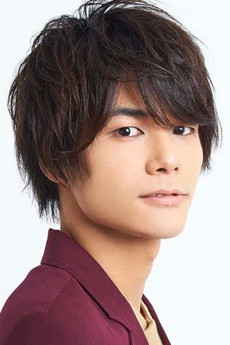
Taku Yashiro
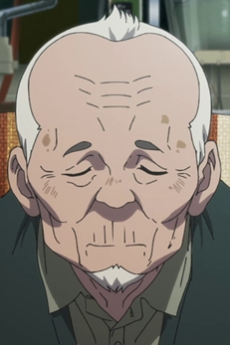
Souji Kikuiri
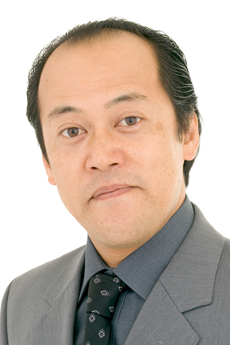
Youhei Tadano
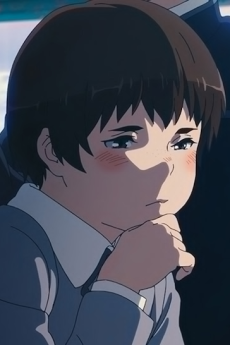
Yuuko Sonobe

Ayaka Saitou
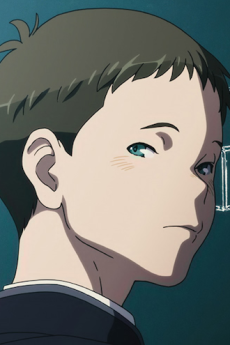
Yasunari Senba
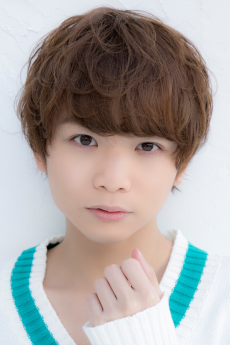
Daiki Kobayashi
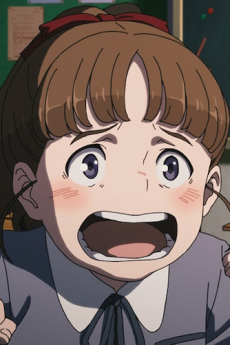
Reina Azumi

Yukiyo Fujii
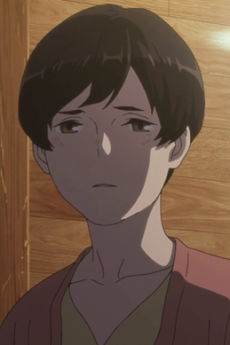
Misato Kikuiri

Toa Yukinari
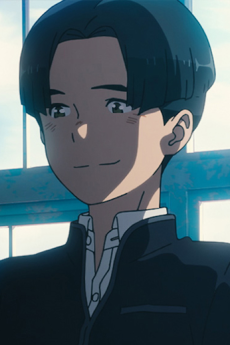
Atsushi Nitta
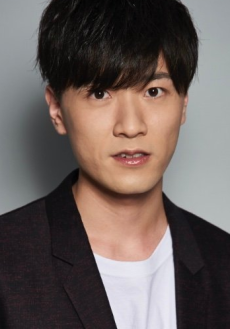
Tasuku Hatanaka
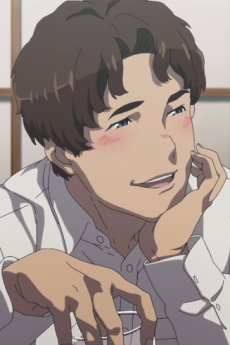
Tokimune Kikuiri

Kento Hayashi
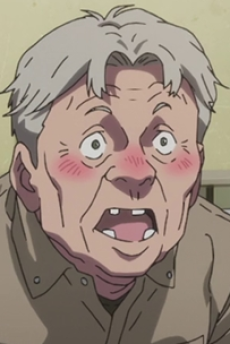
Hitoshi Tachibana
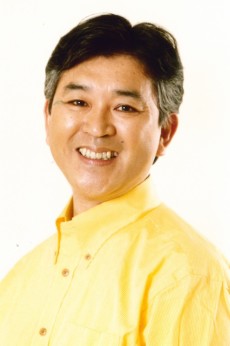
Masayuki Omoro

Akimune Kikuiri

Kouji Seto
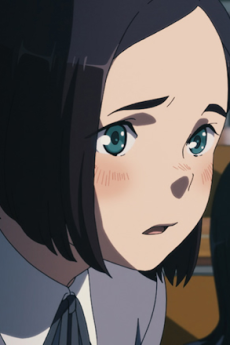
Akina Hara
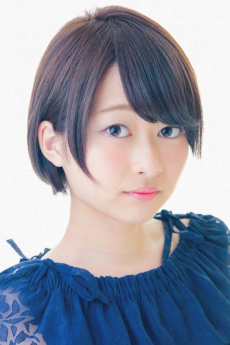
Maki Kawase
REVIEWS

Juliko25
63/100Maboroshi: The most Mari Okada movie ever made, with all the good and bad that comes with it.Continue on AniListOh, Mari Okada, I wish I knew how I felt about you as a creator. After her theatrical debut with Maquia: When The Promised Flower Blooms, she's back in the director's seat with a brand new movie, Maboroshi, or if you wanna use its Japanese title, Alice and Therese's Illusion Factory. No, I don't know why the Japanese title is so strange. I read something about how the names Alice and Therese, when said in Japanese together, also pronounce the name Aristotle in their language, which makes you wonder why they didn't just call it Aristotle's Illusion Factory, especially since there are no characters named Alice and Therese in the film, but I digress. Anyway, Mari Okada is pretty prominent in the anime circle, and people tend to be divided on what she works on or creates. Some like her stuff, others hate it, and some are mixed. There are anime she's worked on that I really love, such as AnoHana, Maquia, and Anthem of the Heart, but also titles that I'm really not a fan of, such as A Whisker Away, A Lull In The Sea, and Hanasaku Iroha. If you get the chance, I highly recommend you read her autobiography, as it's really enlightening and fascinating. Now that Maboroshi is out (I'm going to refer to it by the official English title that Netflix gave it for the sake of brevity)...unfortunately, I don't feel this movie is as good as Maquia. Someone on a blog I follow described it best, that Maboroshi is the most Mari Okada movie ever made, with all of her indulgences and writing tropes concentrated into one movie. Not gonna lie, they're absolutely right, and unfortunately, this isn't one of her better movies, which is a shame because there is a lot to like about it!
14-year-old Masamune Kikuiri is your average middle school kid who likes hanging with his friends and practicing drawing in his rural Japanese town. One day, an explosion at the local steelworks factory literally shatters the sky as if by magic, cutting the town off from the rest of Japan. Time is literally frozen. Nobody ages or grows old, the seasons never change, there's no new forms of entertainment, the world has truly become static. Everyone trudges on, hoping the world will right itself, but nothing changes. One day, Masamune has an unpleasant encounter with his mysterious classmate Mutsumi Sagami, who sneaks him into the abandoned factory to show him something...or rather, someone: A feral girl she's been taking care of in secret, whom Masamune names Itsumi. Upon getting to know her and the circumstances surrounding her imprisonment, Masamune discovers that Itsumi's existence might just be the key to figuring out why the town is in the state that its in. But some people fear what could happen if things change, doing all they can to keep the kids from helping Itsumi.
Gentle reader, I ask you, did you ever read that Ursula K. Le Guin book The Ones Who Walk Away From Omelas and wonder why nobody in the book bothers to just rescue the abused child from their imprisonment? Mari Okada decided to actually do just that, taking that one question and building the whole house around it, which forms the backbone of Maboroshi. The story is actually the most interesting part about this movie, really going deep into examining just what being stuck in a truly static world and never physically changing does to a person and a whole community. Imagine being an elderly person who struggles with daily tasks who can't even die, or a pregnant woman whose child will never be born. It also explores what happens when people look to those who seem like they have the answers, even if the person in question is a crazy old coot whose explanations have no real basis in logic. Gee, that totally doesn't remind me of a cult leader or anything. The implications behind the world these people live in are really terrifying and depressing if you think about them, which is obviously intentional on the movie's part. Using all this to craft a story about the fear of change and the difference between making the best out of a bad situation and simply resigning yourself to it is done really well here.
The stellar animation and deliberately 90s music also really helps bring this dilapidated, static town to life, making it into a character of its own. Yes, Maboroshi is firmly set in the nineties on purpose, and kudos to the movie for really putting a lot of care into recreating that time period down to the last detail. Oh, and I bet you're wondering why the singer they brought on to sing the ending song has such an...interesting voice. Remember how in Maquia, Mari Okada really wanted to have Bravely Default veteran Akihiko Yoshida to do the character designs for the movie because she really liked his work? For Maboroshi, according to this article, Okada personally asked popular singer Miyuki Nakajima to create an original song just for the movie because she really loved her songs, and the reason her voice sounds so distinct and unlike most of what you hear in anime movies is because Nakajima is 71 years old. I admit I'm not familiar with Nakajima's work besides Shin-On, but the fact that she's still singing well into her seventies is pretty amazing.
God, you have no idea how much I wish I could have liked this movie more than I do. The basic set-up is interesting, and I actually cared about Itsumi's plight. Unfortunately, the characters and how Okada uses them are the movie's biggest weakness. I thought the male lead, Masamune, was fine as a character. Not the most three-dimensional, sure, but he has his reasons for doing what he does and his insecurities and frustrations are relatable. However, other than him and Itsumi, none of the other characters are in any way interesting or compelling whatsoever, and there are several that feel really out of place in this movie. I really could have done without that pervy fat kid and his antics. This also leads into one of Okada's biggest weaknesses as a writer: For some reason she has this bad tendency to shove pointless love triangles/polygons in the stuff she works on, even when having them would feel really out of place and on characters that she really doesn't bother to develop or flesh out. There's a girl in the movie whose only reason for existing is to tell Masamune she has a crush on him, and for a really dumb reason at that, and to be fridged just to get the main conflict going, and I really couldn't give a shit about her because the movie never bothered to flesh her out beyond the fact that she has a crush on Masamune. Plus, I really didn't like Mutsumi as a character, and the fact that the movie introduces her by having her show her panties to Masamune just to give them a reason to interact is just...gross. You literally could have done anything else just to get them to talk to one another. Hell, Mutsumi spends a lot of her time being mean to Masamune and dragging him into her problems, with Masamune rightfully calling her out on her behavior a lot of the time...and then later in the movie they're suddenly in love and falling all over themselves for each other. And I'm sorry, but I could not buy their romance at all. Not only did they hardly ever spend time with one another for there to be any romantic or even friendly chemistry between them whatsoever, Mutsumi spends so much of the movie being a bitch that I really couldn't see why Masamune would even fall in love with her in the first place. Every attempt at romance in this movie seems thrown in there just for the sake of shoving in some contrived drama when they could easily be cut out to make for time to actually develop the characters. You could literally cut most of the side characters out of the movie and it'd probably be better off.
And for as much as I like the overall story for this movie, a lot of the conflict stems from people acting like arrogant pricks who can't use their heads for one second or even refusing to do really basic things that could have been resolved things right then and there. There's so many plot threads left hanging and basic questions the movie just flat-out doesn't answer because it's more concerned about having every character fall in love than actually doing something. Such as the following: Why does nobody bother to tell Itsumi that she's actually Masamune and Mutsumi's daughter from the future? Or that she somehow Doctor Who'd herself into the past? For that matter, why did the movie feel the need to make Itsumi be romantically jealous of the middle school versions of her parents? That's just super creepy, moreso considering how infantilized she is. Outside of the whole pointless romantic drama, what happens to the people who get cracks and disappear? Do they just...magically get transported into the future, or do they flat-out die? What the hell even are those smoke wolves?! I want answers, movie!
Man, it sucks that I couldn't enjoy this movie more, because it does have some genuinely great stuff in it, and I think its great that Mari Okada is being allowed to do more of what she wants as a creator. I certainly hope she gets to do more things after this. But I and other people find that her works tend to be better when she has someone to reign her in sometimes or if she just cuts the needless romantic drama bullshit. So yeah, I prefer Maquia over Maboroshi, as the latter is a little too preoccupied with pointless drama to care much about character development or really making full use of its potential. But that's not to say Maboroshi doesn't have anything to offer, like I mentioned above. If you like the movie, more power to you. Maboroshi isn't the best or worst thing Okada made, and I hope the next movie she makes is successful. Oh, and I recommend you watch the English dub, both because it is genuinely very good, and because they cast an actual child actress to play Itsumi, which makes her sound far more authentic and bearable to listen to compared to putting up with the literal auditory nightmare that is Misaki Kuno's squeak toy voice.

AnimeDweeb
70/100"What am I living for?"Continue on AniList#*Originally posted on my YouTube channel. Edited for AniList.* *** This review contains **spoilers** that are tagged accordingly. *** A terrible explosion at a steel factory has just shattered the night sky into a million pieces. Everything was about to change. And then, nothing would change ever again. After that night, time began to behave differently, trapping the survivors of the explosion in a strange stasis. These inhabitants of the seaside town of Mifuse are still allowed to go about their day, although the day never changes. With no escape or contact with the outside world, a never-ending winter now mysteriously hangs over Mifuse. *Maboroshi* introduces us to a town that cannot move on from the fallout, a people perpetually trapped in time and remembrance — an existential crisis after the explosion. The radio plays the same live broadcast of the programme heard on that fateful night. A pregnant woman roams around the town with an empty stroller, as she carries a child that cannot be born. The kids at Middle School cannot age, as they lie trapped in a nightmarish Neverland, never to see adulthood. While the town of Mifuse is forever frozen in winter, the passage of time is still deeply felt throughout the town’s inhabitants. So many days have gone by, and yet, none at all. Rather than spend its runtime dealing with the chaos that emerges in the wake of disaster, *Maboroshi* finds its horror in a long-term aftermath, trapping its characters in an existence with no meaning. That hopelessness weighs heavy on Masamune Kikuiri; a boy with talent, ambitions and dreams unfulfilled. So long as the snow continues to fall from a cracked sky, he will remain Forever Fourteen.
Reminiscent of the movies [Makoto Shinkai](https://anilist.co/staff/96117/Makoto-Shinkai) has made over the past decade, *Maboroshi* invokes the supernatural and alludes to real-life tragedy. In order to understand what makes the *Maboroshi* so haunting, we first should compare this imagery to its origin. The damaged steel factory looms large over Mifuse, a fictional seaside town that takes after its real counterpart, Fukushima, which was the site of a tragic disaster that took place on March 11, 2011. The aftermath of the Fukushima Daiichi Power Plant explosion has left monumental damage in its wake. It will take several years for the soil and sea to be fully cleansed from its uninhabitable radiation; meanwhile, the healing process for the Japanese people may take even more time. But after confronting what’s likely the worst experiences of their lives, it’s my hope that the survivors of March 11 have since picked themselves up and moved towards the future. In contrast, no such future exists in the frozen temporal hellscape of Mifuse. *Maboroshi* ‘s director and screenwriter [Mari Okada](https://anilist.co/staff/100978/Mari-Okada) takes this backdrop and amplifies a feeling of despair through the use of supernatural elements, ensuring that the townspeople are literally unable to move on with their lives. *Maboroshi* holds the human spirit hostage at its lowest point, and asks: “What am I living for?” This question will go on to define the rest of the film, as our characters come across crushing revelations.
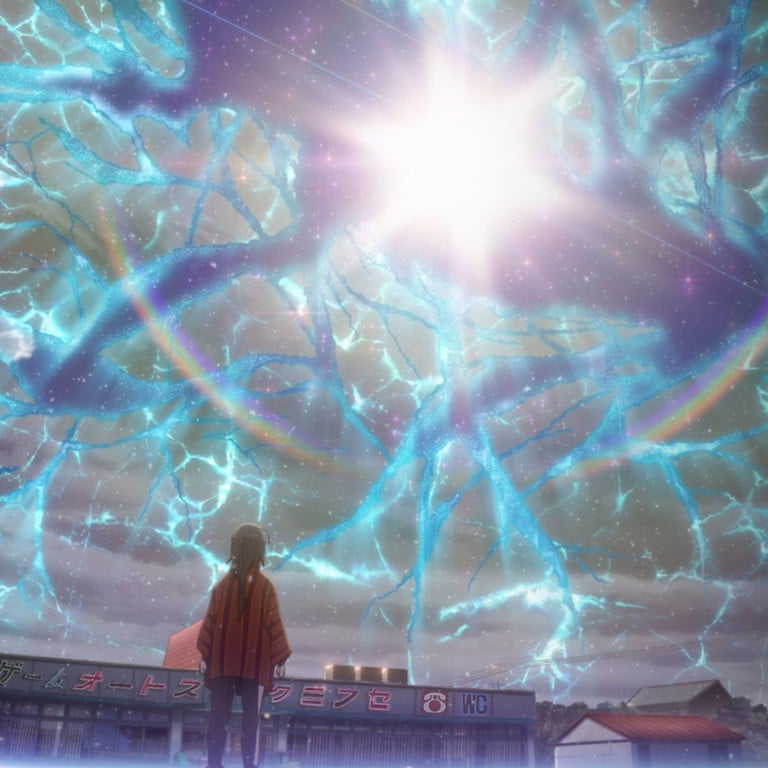
In *Maboroshi* , Okada subtly crafts a thought experiment founded on nihilism, with the people of Mifuse having their lives stripped of almost all meaning. The film makes the great decision of exploring these existential conditions through the eyes of Masamune Kikuiri and his fellow teenage schoolmates. The youth are the perfect vessels for dealing with *Maboroshi* ‘s themes. Adolescence is the time in our life spans in which we are at our most uncertain and aimless — the time where we’re most likely to ask that question: “What am I living for?” With reality continuously making less and less sense, these teens have resorted to cheap thrills: teasing, violence, acts of attrition, and tests of courage — anything to *feel something* again. There’s a certain numbness that can be observed throughout *Maboroshi* ; be it through the crass, careless way in which our characters interact, or through the film’s gorgeous cinematography and OST. Taken in as a whole, the film’s atmosphere is edgy in a manner that feels odd, yet both intentional and essential in fully following through on Okada’s bold vision. This thought experiment created is full of mystery, and its unorthodox storytelling will keep you guessing all the way till the credits roll. What exactly are the supernatural occurrences that have befallen Mifuse? When will it all end? Can the adults be trusted in guiding the people through this strange new world order? And just who is the secret child that these leaders have stashed away in Blast Furnace #5? The journey to solving these mysteries is rich in harsh character drama, culminating in an emotional third act capable of pulling your heart in all directions. My favorite aspect of *Maboroshi* is its bold willingness to uncompromisingly explore its unusual ideas, achieving narrative and storytelling outcomes that are only possible in its engaging world.
*Maboroshi* is a stunning anime bursting at the seams with intriguing storytelling, great cinematic moments, and raw emotion. But it’s also a show with some notable caveats. The first is that there are character moments in here that push the needle too far in terms of shock value and novelty. For the most part, I thought the characters in this show are portrayed well within the show’s odd, mature setting. However, there are at least a couple of character moments that come across as needlessly gross, while others at times feel unjustified or underdeveloped. These abrupt points of whiplash in the story are part of a larger issue surrounding the show: that being a shortage of organic character development. Notably, the second act struggles to convincingly connect the other thirds of the film together. Key story beats that feel like they come out of nowhere, as the screenplay sacrifices coherency in exchange for cryptic symbolism. On that note, despite my praise so far in this review, there’s a decent chance that some audiences may come away from *Maboroshi* dissatisfied. The movie’s medley of supernatural elements and shocking twists might leave you not knowing what to think of it all. Thankfully, I’ve done some of the thinking for you. Let’s really uncover what makes this movie so special. In *Maboroshi* , glass-like cracks keep appearing throughout Mifuse. The only thing that seems to keep the seams of reality together is the steel factory, now dubbed the “Sacred Machine” by a religious household. After the explosion, the factory now produces a supernatural entity known as the “Sacred Wolf”, which seals the cracks and keeps reality intact. Eventually, the movie reveals the haunting truth behind these mysterious distortions. The cracks do not originate from the town itself, but from Mifuse’s trapped souls.
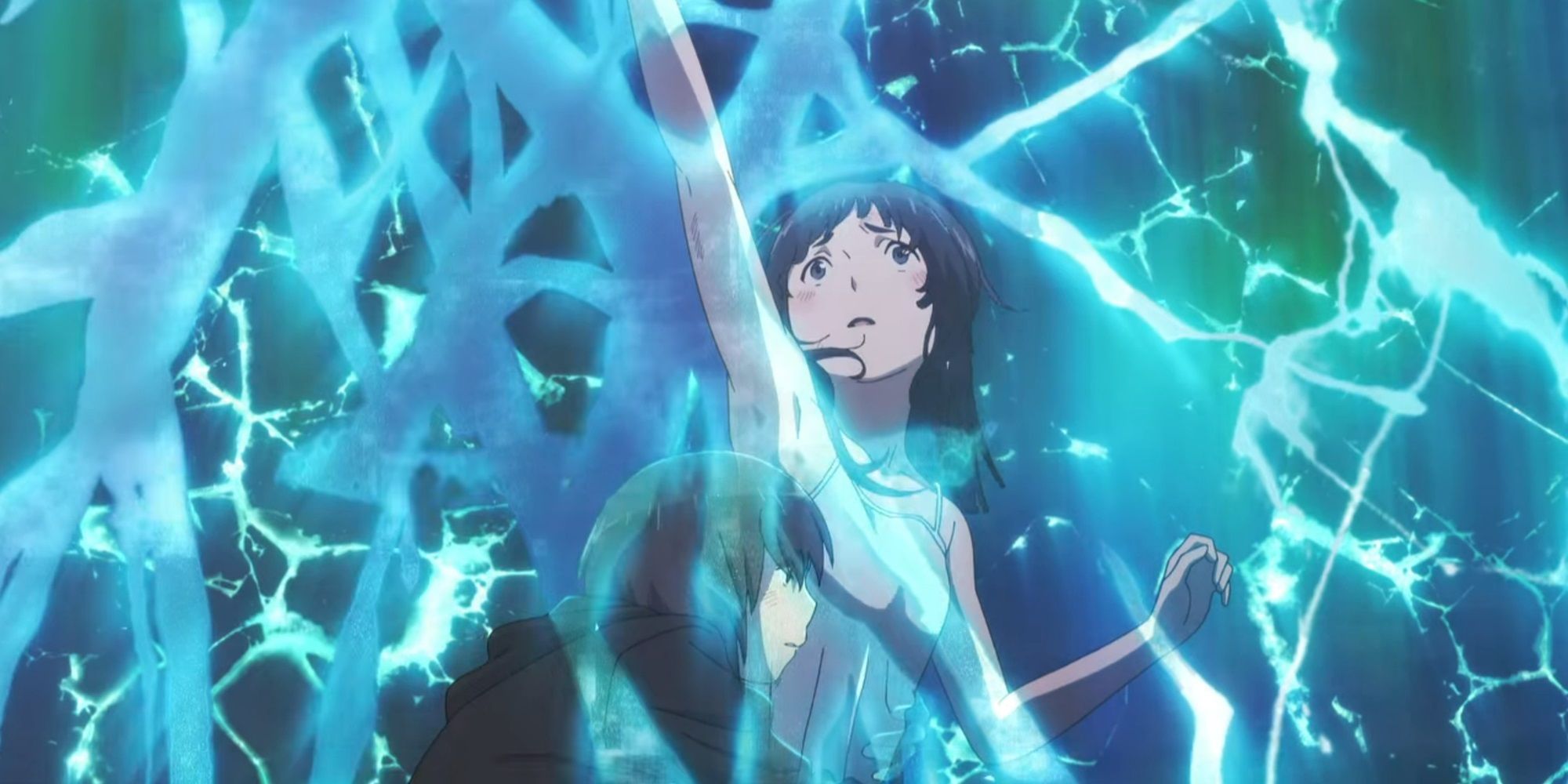 Death appears to be the only real escape from this purposeless prison, but the people of Mifuse cling onto a different hope. Mamoru Sagami is the head of a family of religious Shinto priests. In the immediate chaos after the factory explosion, Sagami had convinced the people to deify the Sacred Wolf. This strange god would protect the townspeople from the abnormal cracks, and eventually allow for the survivors to return to reality. But, as Masamune discovers, there are secrets hidden behind this veil of religious superstition. Sagami’s step-daughter and mysterious classmate, Mutsumi Sagami, enlists Masamune’s help in taking care of a secret girl hidden in Blast Furnace 5. This child, whom they name Itsumi, is later revealed to be a remnant of the real world that has strayed into a mirror dimension — a temporal realm that formed on the night of the explosion. As proof that reality exists beyond, Masamune and Mutsumi eventually discover that their real-life counterparts have grown up together as adults, still waiting on their daughter Itsumi to return home. The disheartening revelation that their existence is a lie sends Mifuse’s frozen townspeople into chaos and hopelessness, as more cracks appear than ever before. Itsumi’s emotions are also understood to be destabilizing the mirror dimension, further adding to the aberrations. It’s up to the teenage Masamune and Mutsumi to return Itsumi to the home where she belongs, before this illusion comes apart completely.
Death appears to be the only real escape from this purposeless prison, but the people of Mifuse cling onto a different hope. Mamoru Sagami is the head of a family of religious Shinto priests. In the immediate chaos after the factory explosion, Sagami had convinced the people to deify the Sacred Wolf. This strange god would protect the townspeople from the abnormal cracks, and eventually allow for the survivors to return to reality. But, as Masamune discovers, there are secrets hidden behind this veil of religious superstition. Sagami’s step-daughter and mysterious classmate, Mutsumi Sagami, enlists Masamune’s help in taking care of a secret girl hidden in Blast Furnace 5. This child, whom they name Itsumi, is later revealed to be a remnant of the real world that has strayed into a mirror dimension — a temporal realm that formed on the night of the explosion. As proof that reality exists beyond, Masamune and Mutsumi eventually discover that their real-life counterparts have grown up together as adults, still waiting on their daughter Itsumi to return home. The disheartening revelation that their existence is a lie sends Mifuse’s frozen townspeople into chaos and hopelessness, as more cracks appear than ever before. Itsumi’s emotions are also understood to be destabilizing the mirror dimension, further adding to the aberrations. It’s up to the teenage Masamune and Mutsumi to return Itsumi to the home where she belongs, before this illusion comes apart completely.
To some, Okada’s *Maboroshi* might seem like a M. Night Shyamalan screenplay, with dramatic twists thrown in from left and right, while lacking rhyme and reason. But there *is* a deeply symbolic method to the madness — connecting the dots formed between the cracks, the wolves and the existential crisis that takes over Mifuse. But in order to explain what it all means, we’re gonna need to enter some… *difficult* territory.
The Greek myth of Sisyphus was famously cited by French philosopher Albert Camus. As the story goes, the Greek gods confined Sisyphus to an eternity of pushing a boulder up a hill, only for the boulder to roll back down upon reaching the top. What makes this divine punishment so excruciating is that Sisyphus is fully conscious throughout, and is constantly reminded of the futility of his actions. But Camus notes that in spite of his turmoil, in spite of gods and a universe he cannot control — Sisyphus has control over one thing: the boulder that's presently in front of him, and getting it as high up the hill as he can. In that control he finds meaning, and in that meaning he finds joy. “One must imagine Sisyphus happy.”
Camus used this myth to tackle what he described as “the fundamental question of philosophy” which is the meaning of life. He claims that the act of pushing Sisyphus’ boulder is a form of absurdity: the parts of life that lack reason and purpose. Camus rejects every manner of living that rejects or negates the absurdity of life; be it through intentional death, religion or otherwise. He argues that true purpose must be attained by embracing the constant battle between “a mind that desires, and a world that disappoints.” Only by accepting absurdity and finding fulfillment in the present moment, can we create our own meaning and purpose in a world that refuses to make sense. It's not easy to accept absurdity. Despair can overwhelm us. The cracks of Mifuse form from the souls of those who no longer can cope with absurdity. Supernatural winds from the factory seal those cracks, and Sagami worships the Sacred Wolf as signs from the gods. [Wolves are revered in the Japanese religion of Shinto as divine messengers of the gods, while also being worshiped as mountain protectors throughout Japanese history](https://ralphhaussler.weebly.com/wolf-mythologie-japan.html). But to believe in a higher power is also a means of rejecting absurdity. Sagami only seeks to enforce his cultist imagining of the world and impose control over Mifuse under a religious guise, even if it means separating an innocent child from her mother and father. That is no way to live your life. So, what is?
How does one truly embrace absurdity? “What am I living for?” *Maboroshi* offers us one answer, and it lies in probably the most absurd absurdity of them all. >#“Do you hurt? Is it Love?”
“Yeah. It hurts. How do I put this… it’s a **Sweet Pain**.”Masamune Kikuiri loves Mutsumi Sagami. But he’s always hated her as well. That doesn’t make any sense, but it never needs to, and yet it does. Is that sensation one of desire? Or a nagging hatred? His chest aches all the same, filling his waking moments with thoughts of Her. In a universe parallel to a reality in which their adult selves fell in love, under a sky trapped in winter, these teenage illusions found a love of their own.
“What am I living for?” *Maboroshi* ‘s answer is to embrace the ever-illogical present, even amidst pain. To surrender our futile attempts at finding lasting control or complete understanding of a world that fails to make sense — of a tomorrow that remains an elusive mystery. Life is not about cowardice and running away from the hurts we cannot comprehend. Life can be about love, just as much as it can be about heartbreak; they are two sides of the same coin, and will stir our hearts either way. This is our burden to carry up the hill we call life. It hurts, but it’s this sweet pain that reminds us that right now, in this moment, we are **alive**.
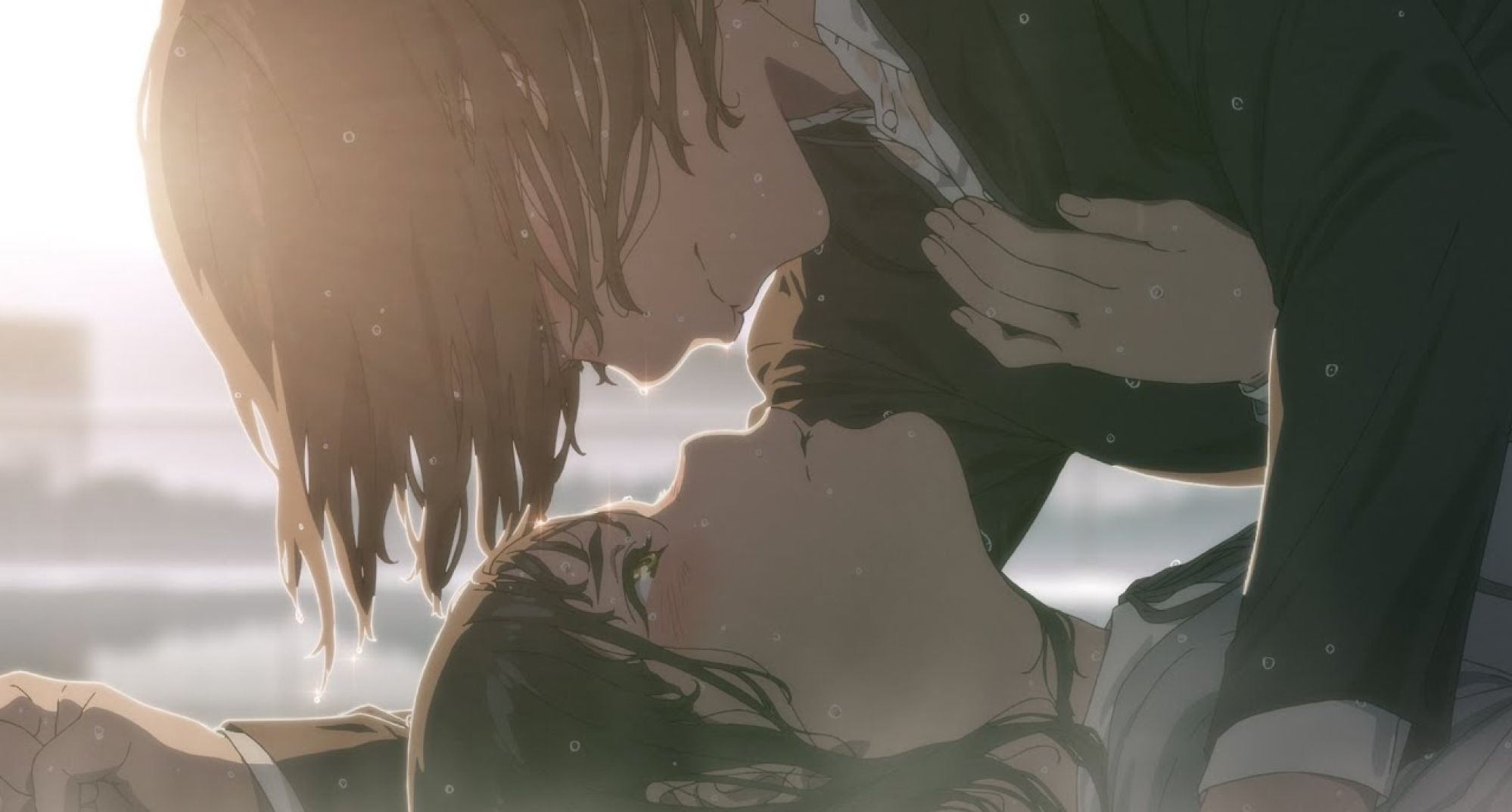
MAKE SURE TO LIKE, COMMENT AND SUBSCR-
Kidding, I'll spare ya' the spiel. Thanks so much for checking out the review! I've tweaked things here and there to make this review as a video essay, which was a fun learning experience for me. From the bottom of my heart, thank you for all the support over the years, I wouldn't have come this far without you. If you happen to like my verbose rants, feel free to check out my other [reviews](https://anilist.co/user/AnimeDweeb/reviews) for seasons past and present. I also frequently post writeups under my list updates, so definitely take a peek if you'd like to see me mald over anime as they hit the airwaves. Peace~
Kroioo
80/100Maboroshi is a bittersweet victory.Continue on AniListThe vision of Maboroshi, in my experience, was unique. The first half of the film is promising, intriguing. It introduces a highly fascinating mystery, equally captivating themes, and an absolutely monumental aesthetic that creates a cohesive beauty. This aesthetic aligns perfectly with the mystery surrounding it, including the dragons and the cracks—it’s all very well done.
The role of the factory, an unconventional location for a mystery narrative, manages in Maboroshi to take on and embody that aura of mystery. It’s a type of mystery you wouldn’t expect, or even associate, with a place like a steel factory. Yet, it’s precisely this unconventional aspect of the location that makes everything even more mysterious.
I started to think about it: all this mystery tied to a place like a steel factory—the smoke it emits, an essential element of a factory’s operations—has been cleverly tied to the mechanics of the plot’s mystery. The smoke, a mundane feature of the factory, becomes part of the story's mysterious mechanics. This link between mystery and the factory, within the narrative framework of Maboroshi, is even more convincing because it is the factory itself that hides the mystery. And this is directly tied to the smoke it releases.
This is what gives vitality, conviction, and a true aura of fascination to the mystery narrated by Maboroshi. The revelation of the mystery is also satisfying. We discover that the factory in an alternate reality, separate from the film’s "real" world (the baseline reality, so to speak), exploded, claiming the lives of many inhabitants of the town where it was located. Consequently, the gods—who likely, or theoretically, watched over the real town of Mifuse (the name of the town where the factory exploded)—created an alternate reality. In this alternate world, they imprisoned the essence of the people who had died, saving them.
It is as if these deities wanted to preserve the reality of Mifuse before the explosion. They preserved both the city’s aesthetics and the essence of the people who had died, or whose lives would have been devastated by the explosion. After all, the explosion affected the entire town, even those who survived.
The gods, however, imposed a condition on this alternate world: the people would live in this illusory world, where the factory—previously the cause of death in the real world—now became the source of life. The factory’s smoke was used by the gods as a kind of home or habitat. The dragon—or rather, the wolf of smoke, whose body is made of the factory's emissions—intervenes when cracks appear. These cracks are formed by what? By the emotions of the people living in the illusory world.
The gods' idea was to create this illusory reality, a crystallization of Mifuse's "golden days," so to speak, so that the memory of the place would remain eternal. However, they realized that the people living in this reality didn’t even recognize the illusory world they were part of. This ignorance provoked emotions—love, hate, anger, resentment, melancholy. These feelings disrupted the natural order of the illusory world, a world meant to be a crystallization of humanity. The emotions caused literal cracks in the reality.
To address this, the smoke wolf, a manifestation of 50% of the gods and 50% of the factory’s smoke, intervenes to close the cracks from time to time. This situation worsens significantly when the real world begins to breach the illusory one, marking the first instance of such an event.
Itsumi, a little girl, daughter of Masamune and Mutsumi, has a version of herself in the illusory world. But in that world, the parents don’t know her or even recognize that she is their child. Itsumi is locked away by a cult led by a preacher posing as a politician or factory worker. In truth, he is one of the few who understood how everything worked. He realized that Itsumi, coming from the real world, carried with her an overwhelming amount of emotions because she was a child—and children are the embodiment of raw, genuine feelings.
He understood that if Itsumi left the factory, she would see the outside world, the perfect world crystallized in Mifuse’s golden days, and would shatter everything. She would create cracks of unprecedented magnitude.
From this point on, and with Itsumi’s appearance, the credibility of the mystery in the film began to decline, in my opinion. The figure of the little girl, trapped in the factory, dressed simply, with an air of vulnerability, carried a sense of mystery. But the main character, Masamune, a young man burdened with uncertainty and doubt, sees this figure and gradually begins to unravel the mystery.
For me, everything falls apart when Maboroshi starts becoming overly melancholic and sentimental. The narrative focus on the love between Masamune and Mutsumi, while deep, doesn’t fit with the tone of the mystery. They are supposed to be 14 years old, and the kiss scene felt excessive to me. I understand that, on paper, they’re eternally young, and mentally they’ve likely matured beyond 14 years, experiencing deeper emotions. However, a love scene that intense doesn’t suit the film’s tone in terms of age of the characters.
The subplot about Mutsumi’s love for her father—initially misunderstood as a crush and later revealed to be filial love—also detracts from the mysterious, intense nature of Maboroshi. While I love melancholic and emotional settings in films, I didn’t want to see this in Maboroshi. I would have preferred it in a film like Your Name.
In Your Name, there is a small element of mystery within the story, but the focus isn’t on the mystery of the comet. The comet has a lore, details that Shinkai subtly includes, but the viewer’s primary focus is the love story between Taki and Mitsuha. The point of Your Name is that the mystery exists but is secondary to the romance.
Maboroshi does the opposite: the love story exists, but it was supposed to show the mystery first. Yet it backtracks on this promise, emphasizing romance instead, which undermines the themes of the film. This is the impression it left on me.
The ending is good, though, as it regains some coherence with the film’s original themes.
So, what can we say about Maboroshi? It’s an absolutely enjoyable film that captivates you. It gives the impression of being different, a special film of higher caliber—at least in the first half. That’s how it felt for me.
It’s a film with a very pleasing aesthetic. It has some directorial choices that I really appreciated. It features a great soundtrack and excellent Japanese voice acting, which I thoroughly enjoyed.
And while the second-half flaws are noticeable, in the grand scheme of things, when you look at the film as a whole, they don’t ruin it. The film is simply weakened by them—it loses some of its impact, depth, and credibility, in my opinion. Not so much in terms of the plot itself, but in the way the viewer engages with the plot.
That said, it remains a very solid film. It’s definitely worth watching if you’re looking for something thought-provoking, a film with depth in its story that challenges and engages the audience.
Without a doubt, I recommend watching Maboroshi.
SIMILAR ANIMES YOU MAY LIKE
 MOVIE AdventureSuzume no Tojimari
MOVIE AdventureSuzume no Tojimari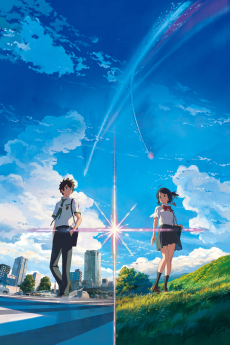 MOVIE DramaKimi no Na wa.
MOVIE DramaKimi no Na wa.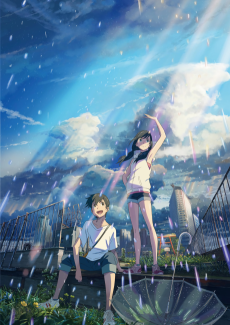 MOVIE DramaTenki no Ko
MOVIE DramaTenki no Ko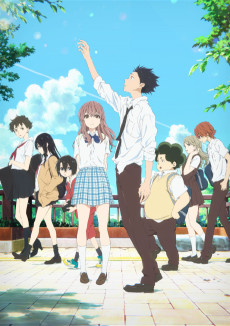 MOVIE DramaKoe no Katachi
MOVIE DramaKoe no Katachi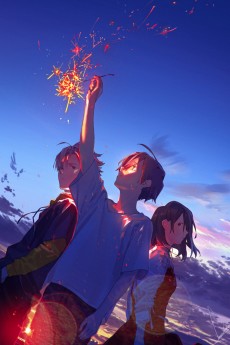 MOVIE DramaSummer Ghost
MOVIE DramaSummer Ghost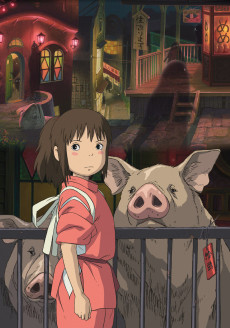 MOVIE AdventureSen to Chihiro no Kamikakushi
MOVIE AdventureSen to Chihiro no Kamikakushi
SCORE
- (3.55/5)
TRAILER
MORE INFO
Ended inSeptember 15, 2023
Main Studio MAPPA
Favorited by 519 Users
Hashtag #まぼろし工場 #アリスとテレスのまぼろし工場 #MABOROSHI

